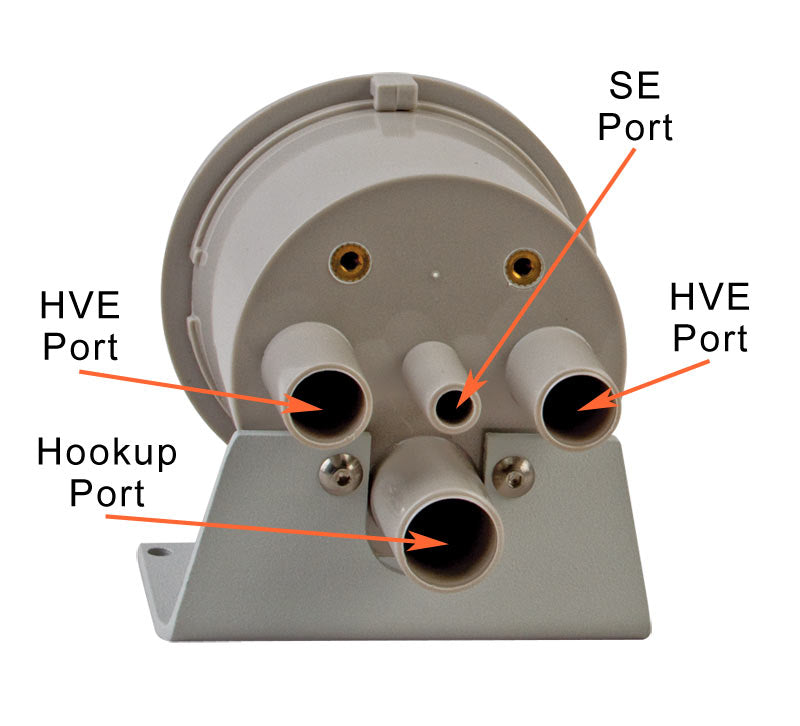We are going to tell you a few tricks to keep your vacuum facts straight in today's Practice Tips #74: Infection Control.
The assistant’s instrumentation (particularly the high volume evacuator valve) is your first line of defense in infection control as it reduces contaminated aerosols which can spread blood borne pathogens which can contribute to cross-contamination.
The high volume evacuator (HVE) and saliva ejector (SE) valves often collectively referred to as the “assistant’s instrumentation.” Both systems connect to a collection canister or commonly referred to as a “chairside trap.”
The Collection Canister Serves Two Primary Functions:
First Function: Splits the main vacuum line from the central vacuum, so you can have multiple vacuum valves in the operatory.
- Most canisters have 4 ports on the bottom, 2 for the HVE, one for the SE, and one to connect to the main line from the central vacuum.
- The different vacuum valves will reduce the expulsion of contaminated aerosols into the operatory, which improves infection control. Also evacuates fluids from the oral cavity to improve visibility and allows the bonding of various materials.
- Also used in conjunction with nitrous oxide to scavenge exhaled gases. In fact, the second HVE port dedicates to a valve to use with your scavenger circuit.
- It is fairly common for the second HVE port to be plugged with a port plug (#30-90) on new equipment.
- NOTE: The port plug available from American Dental Accessories is different from most plugs in that it is tapered. It fits inside the HVE port and outside the SE port.
- Use one plug for either port. Plug made of long lasting synthetic rubber, rather than the thin plastic caps used by many equipment manufacturers.





LEAVE A REPLY